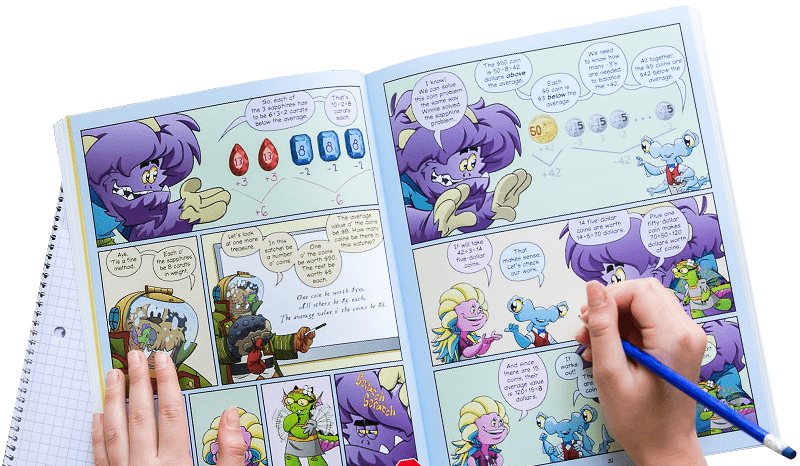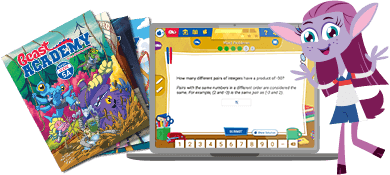Bumper Cars
Sharpen your strategic thinking skills by driving a bumper car up the road.
Instructions
This is a game of simple rules and complex strategy. Start by drawing a road with some dots on it. (Starting with 8 dots is a good idea.)

This is a one-way road. Cars can only move forward.
Place 2 red cars and 1 blue car on dots along the road. We used LEGO bricks, but anything will do. (They don't even need to be blue and red as long as 1 of the tokens is different from the others.) The blue car can't start in front.

Now, take turns. On a turn you can choose to do one of the following:
- Choose any car, and move it forward any number of open dots. Passing or jumping over other cars is not allowed.

- Or pick up the car that is in front. "In front" means the car that is closest to the front of the road, whether or not that car is on the very last dot.

Whoever picks up the blue car wins the game.

Play multiple games. Try different numbers of red cars, and different arrangements of all of the cars (but remember, the blue car can't start in front), and try roads of different lengths. Take turns going first, and try to decide whether the first or second player has an advantage. To figure this out, try starting small, then moving to games with more cars and more dots. See Learning Notes below for some ideas about the strategy behind this game.
Bumper Cars is a variation of the classic math game Nim (and so are other BA Playground activities, including Anywhere Nim and Odd Knights).
Don't forget: it's Beast Academy Playground, not Beast Academy Study Hall. Change the rules, be silly, make mistakes, and try again. The Variations and Learning Notes are here for you if you want to dive deeper, but not all of them apply to learners of every age. The most important thing is to have fun.
What do you think of this activity?
We're always looking to improve. Submit your feedback to us below.
- paper
- pencil
- tokens (2 colors)
- strategic thinking
- MP1
- MP7
- MP8

Ready to level up?
Keep problem solving with Beast Academy’s full math curriculum for students ages 6–13. Check out our captivating comic book series and immersive online platform.
LEARN MOREBring problem-solving to your classroom
Keep your entire class engaged with a full book and online math curriculum, for students ages 6–13. 98% of teachers say they’re satisfied with Beast Academy.
LEARN MORE



Ready to level up?
Keep problem solving with Beast Academy’s full math curriculum for students ages 6–13. Check out our captivating comic book series and immersive online platform.
LEARN MOREBring problem-solving to your classroom
Keep your entire class engaged with a full book and online math curriculum, for students ages 6–13. 98% of teachers say they’re satisfied with Beast Academy.
LEARN MORE
Sign up to be notified when new videos are released.






















































